‘A farm is not beautiful unless it is productive.’
– from The Conservationist (1974) by Nadine Gordimer
With a pocket-full of blazing stars and assorted other wildflower seeds, I’m ready to spend another hour restoring the several acres of longleaf pine savanna that surrounds my home in north Florida. When we purchased the property four decades back, it was badly degraded pasture; the native longleafs were long gone, fires long excluded; hard farming followed by overgrazing had left little for cows to eat and depleted the land of the former savanna’s biological richness. Instead of flowers under widely spaced pine trees, there were patches of bare sand, clumps of dog fennel and head-high stands of ragweed and other ruderals overtopping scraggly pasture grasses. The picture of degradation was completed by errant coils of rusted barbed wire, bottle dumps and a dead refrigerator. There were some native plants but, other than scattered pawpaws, they were mostly undesirables such as cactus and sand spurs. Some thin-barked native trees, mostly sweetgums and laurel oaks, were invading due to exclusion of the low-intensity fires that historically burned through this grassy ecosystem every year or three.
My decision to restore our degraded pastures to its historic state of an open-canopied longleaf pine savanna was by no means immediate. I came to Florida with a love of trees and a preference for forest. As a child, I aspired to a career as a tree surgeon; as an adult, I ended up a tree ecologist, which involves some surgery, more digging, too much data crunching, and lots of wordsmithing. My professional focus is on improving the fates of tropical forests through sustainable management for timber. This means that my job is all about maintaining forest cover. At home, though, I strive to keep trees from invading and shading savanna.
It pains me to admit it, but initially I planned to restore the degraded pasture to functional pasture. I don’t recall cattle-keeping aspirations, but the land was in sad shape and cried out for fixing. New to the South, to me the scraggly pines and oaks growing in coarse sand suggested acidity and nutrient scarcity. I reasoned that a century of hard use had depleted the soil of nutrients, especially nitrogen. Therefore, when offered free slag lime derived from water-softening by our municipal water authority, I jumped at the chance to counter the soil’s acidity. Then I planted hairy indigo, an Argentinian nitrogen-fixer, to deal with that deficiency. The lime was delivered the day after I requested it; five piles of two cubic yards each. A big bag of hairy indigo seeds was readily had and easily sown.
To make a sad story short, I soon realised the error of my ways. Floridian sands are perched on limestone, which keeps the pH near neutral – lime was exactly what the soil didn’t need. As for restoring soil fertility, native pine savanna flourishes in nutrient-poor soil; hairy indigo’s nitrogen contributions favour weedy and exotic species, not the natives I’ve learned to prefer. Thanks to the lack of rocks, it took me and my long-handled spade only a dozen evenings to dig deep holes next to each of those piles to bury the lime. In contrast, the battle against hairy indigo continues; despite consistent efforts to weed it out, the species persists among the bunchgrasses and blazing stars in my recovering savanna.
Given my species’ evolutionary history, my growing appreciation of savannas may have had a genetic component. The astounding plant diversity of pine savannas also appealed to me as a botanist; in their pristine state, my acres would have hosted upwards of 100 species of low-growing understory plants. Included in the understory mix were showy species, like sandhill milkweeds and summer farewell, but also a dozen species of bunchgrasses and sedges, some of which are distinguishable only with magnification. In contrast to that diversity, few species were represented among the scattered trees that overtopped the wildflowers. Intermixed with the widely spaced longleaf pine trees, there were likely a few thick-barked turkey, bluejack and southern red oaks, as well as an occasional mockernut hickory. These pine savannas formerly covered much of the United States’ southeastern coastal plain from Virginia down around to East Texas, but fully 97 per cent is now gone. What’s left is recognised as Earth’s 37th biodiversity hotspot, a mixed honour conferred for mega-diversity (more than 1,500 plant species) and mega-destruction (more than 70 per cent gone).
This incredible understory plant diversity, and the open breezy canopy structure that is the preferred habitat of fox squirrels, bobwhite quail and gopher tortoises, requires low-intensity fires at one- to three-year intervals. Longer intervals between the return of fire spell doom, savanna species wiped out by too many forest trees. With 80 lightning storms per year and more than 10,000 years of occupation by fire-wielding humans, there were plenty of ignitions until the landscapes were fragmented by development and fires were suppressed by Smokey Bear-inspired but misguided humans.
Frequent fires are essential for survival of the ‘grassy’ ecosystems that covered 28 per cent of land
My conversion to a worshipper of savanna was aided by my by-no-means-latent pyrophilia; I conducted my first not-so-controlled burn at the tender age of eight. As the proverbial kid playing with matches in the fields behind my suburban house, I was justifiably alarmed by the rate at which the fire spread through the broom sedge. Worse, the flames were sucked towards my neighbour’s garage. Only quick thinking and a long garden hose kept that structure from being engulfed. Unfortunately, my neighbour Mr Allen drove up just as I was dousing the last of the flames. I was the hero of the day, the fire blamed on cigarette-smoking teenagers from the south side of town. I never admitted my culpability, but suspect that my mother knew. Perhaps that experience provided motivation for the legitimate research I now conduct on fire physics and ecology.
It’s confusing that while wildfires pose threats to people, their properties and non-fire-adapted forests in the tropics and elsewhere, frequent fires are essential for survival of the ‘grassy’ ecosystems that formerly covered some 28 per cent of Earth’s land surface. While not diminishing the sad fates of too many forests, my cherished pine savannas join the ranks of grasslands, savannas and woodlands around the world that are threatened by trees.
Perhaps my few acres of restored savanna will be overlooked when the tallies are made, but my efforts contribute to the achievement of the Bonn Challenge to restore 350 million hectares of land during this, the United Nation’s Decade on Ecosystem Restoration. Most Bonn Challenge folks focus on reforestation, especially in the tropics, certainly not tree removal to restore savannas in Florida. From the perspective of mitigating global climate change, this focus on tropical trees makes sense. Deforestation rates in the tropics remain high and, where properly planted and tended, tropical trees grow fast and sequester tons of carbon. If funds for natural climate solutions to global climate change problems become available, tree experts expect that tropical tree carbon can be had at low cost due to low land prices and cheap labour. Furthermore, community-based, bottom-up approaches to reforestation promise to promote the welfare of both local people and nature.
Despite efforts by a small group of savanna scientists who publish papers with titles that include phrases such as the ‘tyranny of trees’ and ‘the trouble with trees’, arboricentrism still dominates global conservation agendas. Efforts to protect grassy biomes are hampered by the fact that differentiating natural savannas from unkempt pastures often requires the ability to distinguish different grass species. Unfortunately, plant blindness also afflicts many of the remote-sensing folks who map forest restoration opportunities at the global scale. With the power of their maps and clarion calls of international tree-planting advocates (witness the Trillion Trees initiative), few grasslands, savannas, Cerrado, miombo, scrub and other naturally tree-poor areas are safe.
Meanwhile, back in Florida, after hundreds of hours invested in burning, chopping, weeding and planting, my handful of restored savanna acres look good, at least from a distance and if you aren’t a botanist. Given that I am a botanist, at least by training, I’m concerned that half of the desired native species are still absent, and that exotic species are still quite evident. Some days, it also bothers me that many of the overstory pines are either loblollies or loblolly-longleaf hybrids (that is, Sonderegger pines), not genetically pure longleafs.

The author’s savanna, with blazing stars blooming beneath longleaf pines
I don’t do restoration full-time, nor do I derive my livelihood from the land. Instead, I have a full-time university job, with benefits, where my main research focuses on tropical forest conservation and involves more economics than botany. But these acres help keep my hands dirty and my feet on the ground. I do teach about Floridian ecosystems, which helps justify the hours I spend tinkering with wiregrass plugs and drip torches. The irony hasn’t escaped me that, while my career mostly focuses on tropical forest conservation, much less remains of the once-extensive pine savannas near home. I also recognise that my efforts are at the boutique end of the restoration spectrum; there’s only so much that can be done with a spade and a pocket-full of seeds.
The Bonn Challenge has a goal to restore 350 million hectares of ecosystems: this will require buy-ins from landowners and communities of landowners around the world. I’m concerned that the word ‘community’, at least when invoked by global restoration advocates, conveys a sense of homogeneity that I struggle to apply in my neighbourhood. For starters, not all my community’s members agree that mine is the most highly evolved of land ethics.
All landowners in my community are relatively well-heeled but differ markedly in their management objectives. We all benefit from fee-simple ownership and tenure security, alternative incomes, and the freedom to treat the land as we wish. Well, more-or-less as we wish. I hesitate to portray my wife as a constraint, but she does object strenuously when my restoration efforts send smoke into our bedroom at night; we sleep under a roof but with screens for walls, which is great for owl concerts but sucks when smoke lingers. Oh, and she doesn’t appreciate my cutting trees that are older than I am, a constraint that has diminished of late. The only fiscal constraint she puts on my restoration endeavours is that I spend no more than the annual cost of a gym membership.
Management for something generally necessitates management against something else
Other than minor familial constraints, I do not require anyone’s permission to manage our acres for the benefit of fox squirrels and wildflowers. There’s also no one to whom I need to defend the fact that my initiative is faith-based insofar as it derives from my belief in the rights of species other than our own. Sure, as a professional ecologist, I can cite plenty of scientific studies that demonstrate the contributions of biodiversity to ecosystem function, but none of those studies show that we need more than a dozen species, so I rely on faith to justify my biodiversity restoration goals. I celebrate the flowers and wildlife, and otherwise derive personal pleasure from my restoration efforts. I do pay for that pleasure at tax time; because our land is not managed for profit, it does not qualify for an ‘agricultural exemption’ that would substantially reduce our property taxes. I should also admit that, although some government support is available for pine savanna restoration, I find the bureaucratic burdens not worth the trouble, and so I go it alone.
Before diving in further, I need to clarify a semantic issue. What I’ve described so far on my own land is ecological restoration, the goal of which is faithful recovery of a site’s historic natural state and species. In contrast, the UN declared this a decade for ecosystem restoration, defined as ‘the process of halting and reversing degradation, resulting in improved ecosystem services and recovered biodiversity. Ecosystem restoration encompasses a wide continuum of practices, depending on local conditions and societal choice.’ My ecological restoration represents only a small portion of that wide spectrum of possible ecosystem restoration options, most of which aim to recover the productivity of degraded farmland. Many have little to do with the idea of a historic natural state. This emphasis on agroecosystem restoration aligns with the UN’s Sustainable Development Goals (SDGs), which focus on the wellbeing of Earth’s nearly 9 billion people.
As on the global scale, so on the local; my neighbours’ land-uses radically differ from mine but also qualify as ecosystem restoration. Rather than restoring pine savanna, they are restoring the regulating, supporting and provisioning services on which humanity depends, such as climate regulation, nutrient cycling and food production, respectively. I could add to this list that successful ecosystem restoration should enhance ecological integrity and increase resilience, but I’m already suffering from a creeping sense of vagueness. What is clear is that many different sorts of interventions qualify as restoration, at least compared with overgrazing and the all-too-common land-fate in Florida, suburban sprawl.
If we accept that the goals of ecosystem restoration can range from enhanced human livelihoods to recovered biodiversity, then we also have to accept that there will be deep disagreements about the appropriateness of the various alternatives. Given that management for something generally necessitates management against something else, there are tradeoffs associated with whatever restoration approach is employed. But how should the relative merits of different restoration initiatives be assessed? Based on what criteria? By whom? My neighbours and their land-use decisions provide an example of a graphical approach to addressing these questions.
Some restoration-minded landowners in my community focus on recovering the productivity of their degraded pastures. They clear the trees, harrow and herbicide, sow seeds of exotic forage grass, and fertilise. To sustain grass production, they subdivide their pastures by cross-fencing, which allows them to rotate their herd and avoid overgrazing. I’ll call this the ‘pasture restoration’ approach, as opposed to my own biodiversity-focused approach, which I’ll call ‘pine savanna restoration’.
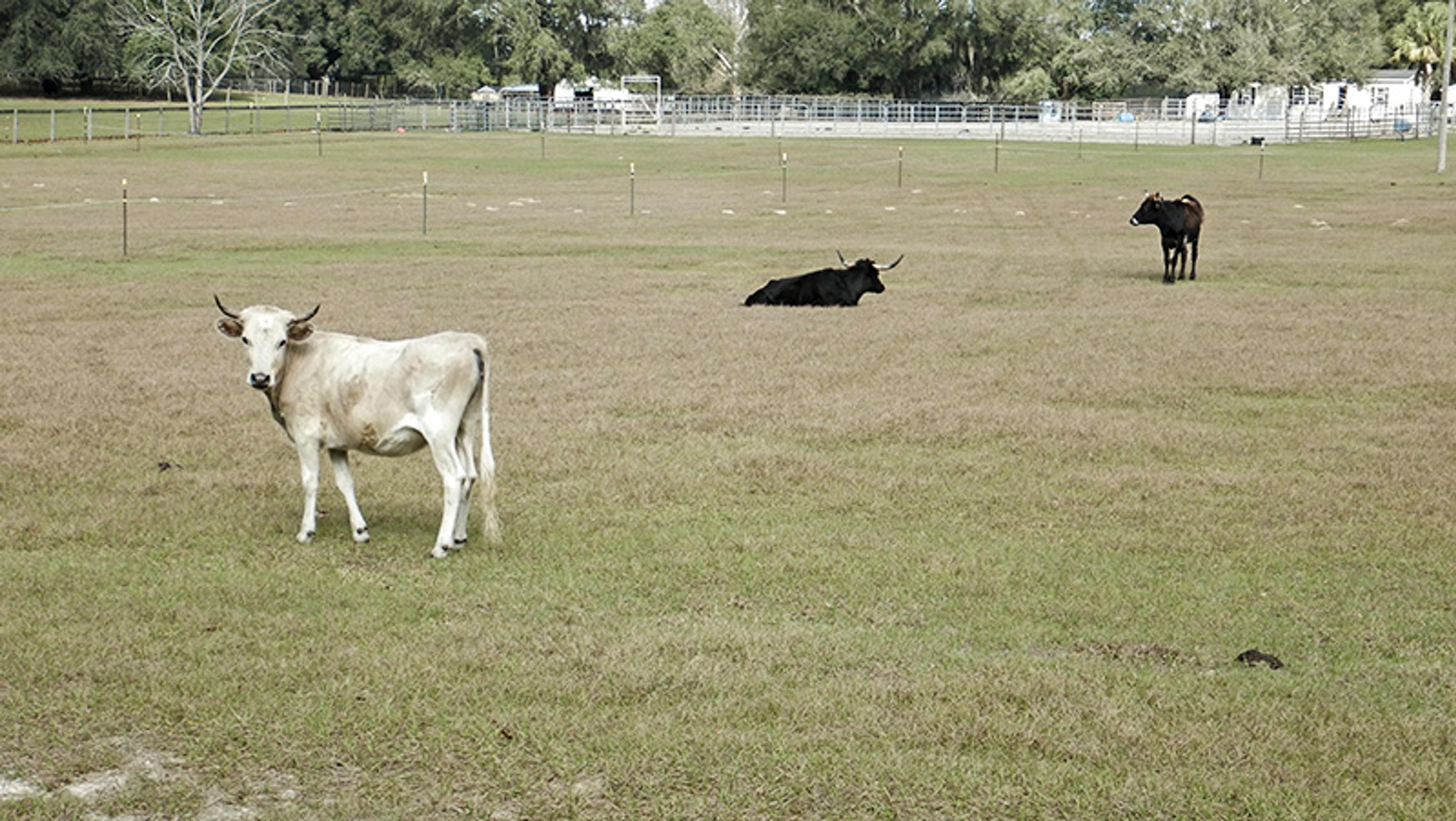
Pasture
Other neighbours also covet agricultural exemptions on their property taxes but worry about veterinary bills and fencing costs, and so bulldoze the remnant vegetation, root rake, poison the survivors, and plant pines in lines. They benefit from government subsidies for plantation establishment, with special rewards for planting longleaf pines in lines. This I’ll call ‘pine plantation restoration’.

Pine savanna
The third type of my land-restoration-minded neighbours invest in local food security and establish Community-Supported Agriculture operations (CSAs) that grow a wide variety of vegetables but are famous for their seasonal superabundance of kale, collards and zucchinis. Land not in row crops is used for fruit and nut trees. They are proud of their diverse and functional agroecosystems. Let’s call this ‘agroecosystem restoration’.
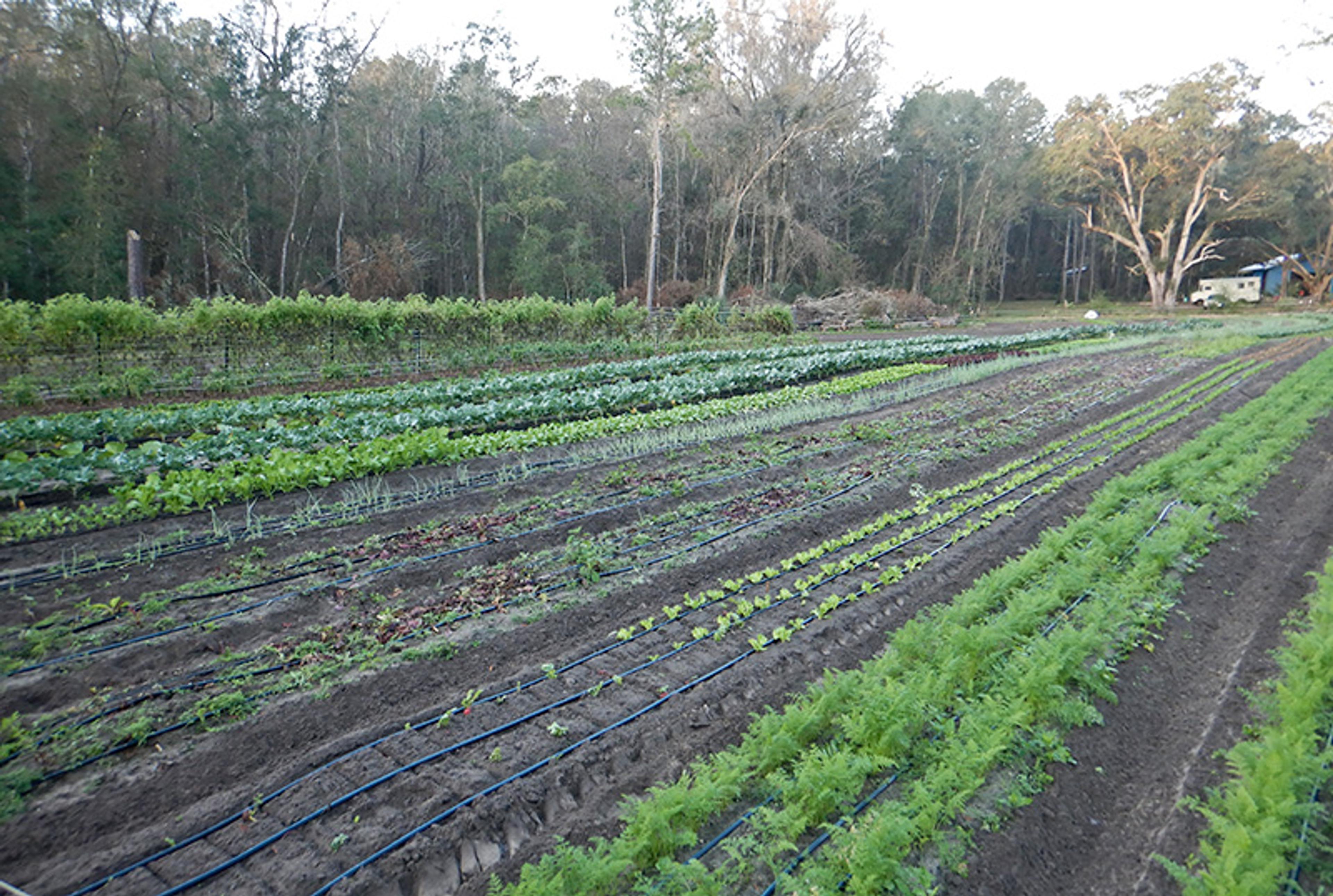
Row planting
The final owner-type looks at their land but instead of seeing degraded pasture crying out for active restoration, they see glorious mixtures of human influences and natural processes. Where I see exotic pests and weeds, they see cute South American armadillos, cochineal cottony scale bugs on the cacti, and the wispy plumes of dogfennel flowers. Their approach to ecosystem restoration is to stop the cow-caused degradation and allow the ecosystem to recover naturally. They consider my chainsaw, herbicide and drip torch as the devil’s devices, or at least the antithesis of nature-loving conservation. The ecological trajectories taken by their acres are influenced by the increasing severity of both hurricanes and droughts, wildfires, and takeovers by a variety of different exotic invasive species. The outcome is forests of weedy trees and vines, with mixed exotics and natives. I’ll call this ‘natural regeneration restoration’.
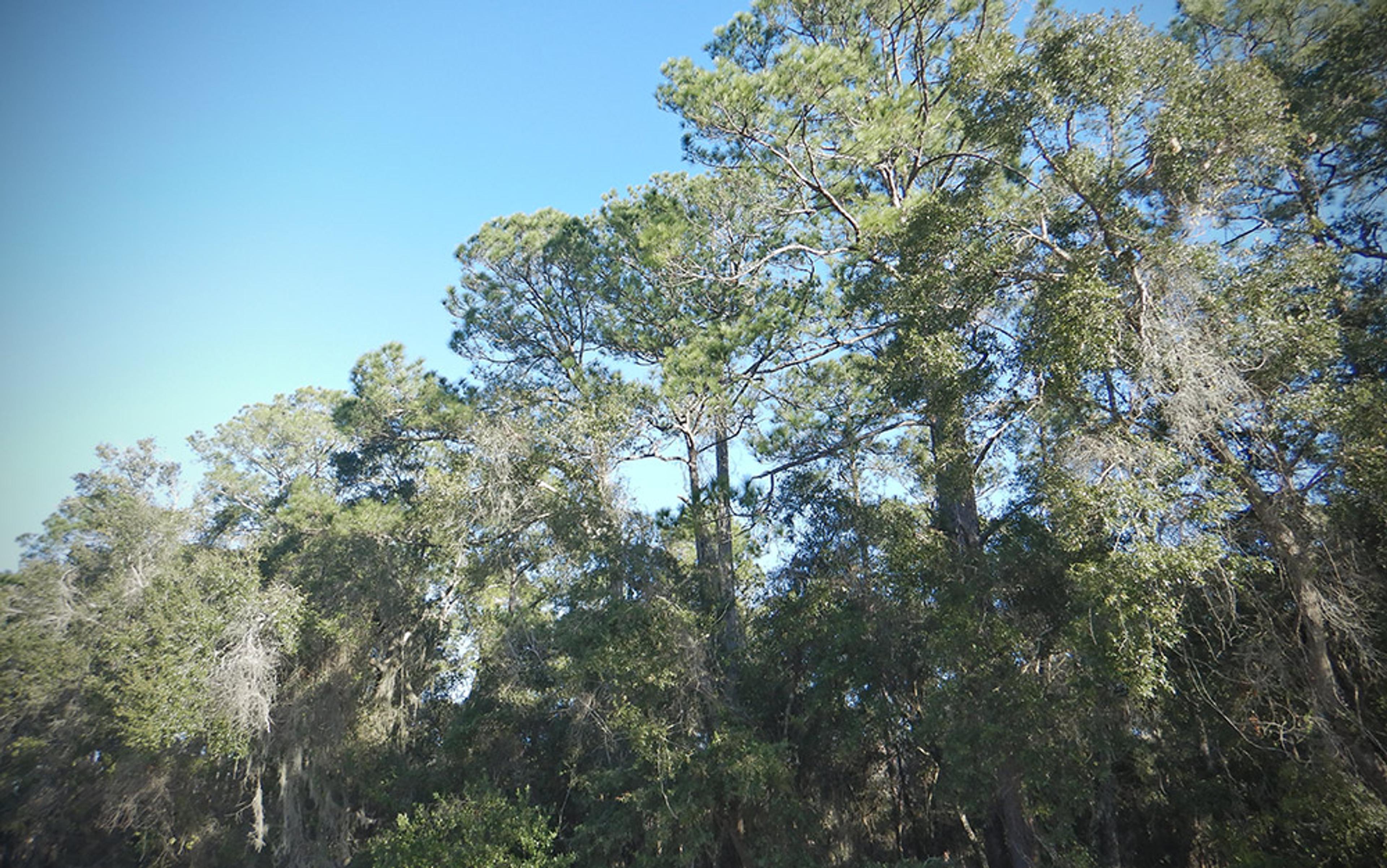
Pine savanna invaded by hardwood trees
Clearly, there isn’t just one easy route back for hard-used land such as overgrazed Floridian savanna to a ‘natural’ state or even to restored ‘functionality’, since what we mean by ‘natural’ and ‘functionality’ varies among stakeholders. Nevertheless, if each of the land-uses just described qualifies as ecosystem restoration, and each delivers different values and entails different tradeoffs, how should they be illustrated, so that these tradeoffs are evident? In trashed landscapes and elsewhere, any management intervention, including doing nothing, has winners and losers among species, as well as among ecological processes, functions and services. Furthermore, there is no single spectrum that runs from ‘degraded’ to ‘natural’ for us to measure these landscapes against, so we need to score restoration interventions on values foundational to ecosystem restoration, in multiple dimensions.
My goal is to recreate the natural ecosystem destroyed by farmers, ranchers and buddies of Smokey Bear
To compare the four restoration options just described, I propose six values shared by many ecocentric restorationists, plotting them in hexagons. The six values are:
- native biodiversity;
- control of exotic invasive species;
- delivery of abundant clean water (ie, hydrological services);
- financial profits;
- carbon sequestration; and
- cultural values.
The outer perimeter of each hexagon represents the highest achievable value for each of the six criteria; inside, we plot how close that land use is likely to get to that aim after 50 years of restoration. (Were this method utilised by communities of poor people, contributions to food security might be added as a seventh value.)
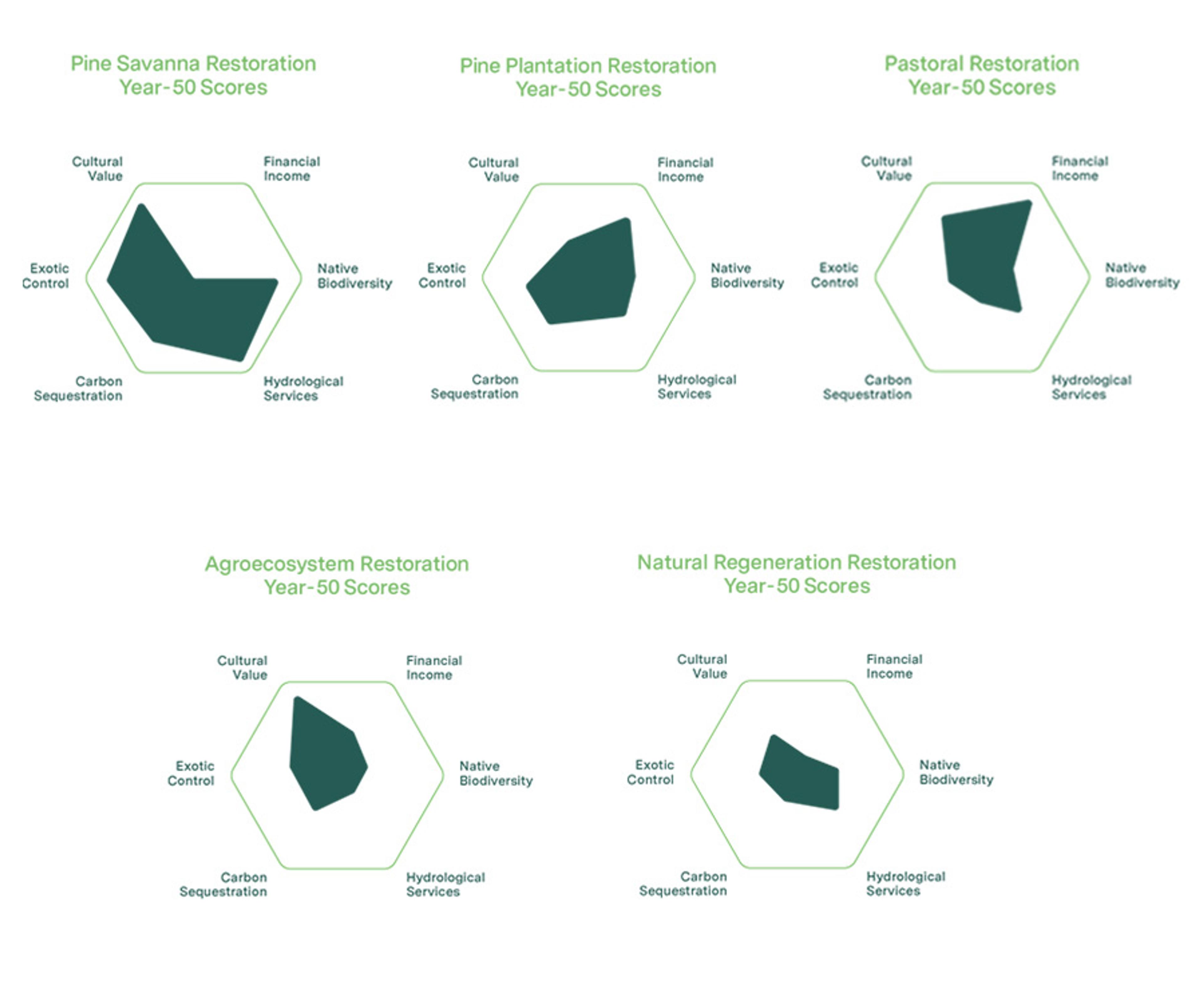
How do we go about assigning scores to each of these values? Let me take each in turn.
Biodiversity maintenance and recovery is a widely shared goal of ecosystem restoration, but scores on this axis of my hexagons are tricky because it depends which species are considered. Given that I am depicting my own values, I’ll define the degree of biodiversity recovery as reflecting the extent to which the plant species composition resembles that of savannas that escaped ploughing and fire suppression – ‘natural’ biodiversity if you will. Restorationists more focused on agrobiodiversity might rate the number of tomato cultivars or potato varieties, but my goal is to recreate the natural ecosystem that was destroyed by farmers, ranchers and buddies of Smokey Bear.
Members of my community of neighbours might also differ in their assignments of scores on the axis that measures the control of exotic species, but these are my polygons so they will reflect my values. A restoration intervention that manages to remove all species introduced within the previous five centuries would receive a high score on the exotic species-control axis in my polygons. Sorry if that criterion seems a bit xenophobic, but I embrace it wholeheartedly. That I kill the pasture grasses that my neighbour plants is ironic, but such is the case.
Water values will depend on local conditions. The principal water-related concern in my neck of the woods is recharging our underground aquifer with high-quality rainwater. Other than where soil surfaces are sealed by pavement or roofs, water readily penetrates and flows downwards through our sandy soils to the porous limestone below. That is, unless too many trees intercept and keep the rain from reaching the surface and then suck out much of the water that does. Hydrological studies have revealed that rates of aquifer recharge are substantially faster in open pine savannas than in closed-canopy plantations and forests.
Scores on the financial benefits axis are a bit easier to assign but, for the sake of transparency and comparability, several assumptions need to be made clear. Most prominently, given that we are dealing with interventions that do not immediately yield financial returns, a time-value of money (ie, a discount rate) needs to be specified – that is, how do we value a dollar today, versus a long-term financial benefit? Any positive discount rate reflects disregard for intergenerational equity, but corporate types use 10 to 20 per cent while the social discount rate is down around 2 to 5 per cent. Financial calculations fail to consider many non-market values, but one of these former externalities can now be captured in carbon payments designed to mitigate the effects of global climate change by keeping greenhouse gases from the atmosphere or increasing their sequestration in plants and soils.
To calculate carbon axis scores, we first need to specify the boundaries of the accounting model we are using. In particular, is the fate of harvested wood products considered (eg, whether they end up as newsprint in a landfill or in a kitchen table)? Another pertinent issue emerges when carbon stocks fluctuate over time due, for example, to harvests; under these conditions, time-weighted averages are typically used. More problematic is dealing with risks to carbon stocks due to pests, pathogens, fires and hurricanes. Actuarial methods could be used to adjust the carbon payments, but those calculations exceed my capabilities, so I’ll use gut feelings to assign values in my polygons.
The cultural value axis captures the non-material benefits of restoration, such as aesthetics, educational opportunities and spiritual benefits. In assigning scores on this axis, I am reminded of the quote from Nadine Gordimer with which I headed this essay. I am also reminded of a comment made by more than one visitor to my home – while looking out over the restored savanna, my visitors ask: ‘Now that your house is finished [which other owner-builders will recognise as a patent untruth], when are you going to start landscaping?’
How do our varied approaches to restoring our shared Floridian landscape look when we score them out on these various axes?
My approach to savanna restoration scores well in terms of native biodiversity and, in my opinion, on cultural value. To the uninitiated, my savanna under restoration may look scrappy, but to me it’s beautiful and brimming with promise, particularly when flowering peaks in the autumn. By keeping the tree density low with controlled burns, my land is also great for aquifer recharge, so it gets a high score on the hydrological services axis. Carbon stocks at the 50-year mark will be modest due to low tree-density but, because those trees are wind-firm, fire-resistant and not stressed by crowding, that carbon is not in jeopardy. Even if the avoided costs of gym membership are included in the calculations, my approach to restoration is far from financially remunerative. Until the county property appraiser gets enlightened and recognises the value of what I am doing, the lack of an agricultural exemption hurts every year at tax time. My finances would improve if growing awareness of climate change resulted in payments to private landowners for sequestering carbon.

The pine plantation path to ecosystem restoration scores poorly on the biodiversity and hydrological services axes, but plantations typically don’t harbour many exotic plant species. Financially, sales of sawtimber and pulpwood at 20- to 30-year intervals can be quite remunerative, but clearcutting lowers the time-averaged stocks of carbon, so any forthcoming payments will be low. Given the susceptibility of dense stands to both wind and fire damage, as well as pest and pathogen problems, carbon payments need downward adjustment to account for these risks. The real financial boon is that plantations qualify for agricultural property-tax exemptions, which lower the annual payments to a 10th of what I pay. Culturally, I don’t rate tree farms at all highly, but that’s just my opinion.

Restoring the grazing potential of degraded pasture qualifies property owners for agricultural property-tax exemption, and calf-cow operations can be profitable. On the carbon-sequestration-for-climate-change-mitigation axis, this option scores poorly due to lack of trees and to bovine emissions of methane. It would score highly on the hydrological services axis due to good aquifer recharge potential, but that score is reduced by eutrophication from cow pies and fertiliser. I feel conflicted about critiquing this restoration option because ranchers favour exotic pasture grasses but join the battle against worse invaders such as cogongrass and tropical soda apple, so I’ll assign it a low-moderate score on that axis. As for the cultural value, I admit that, even after a few short years, their pastures are lush, their cows seem contented, and their pastoral landscapes resonate culturally. Furthermore, I’m sure that in their social circles they derive considerable prestige from their healthy herds.

Restoring agroecosystems on degraded farmland is the goal of my food-growing neighbours. Their labour-intensive organic alternative to corporate agribusiness provides local sources of healthy food, creates employment opportunities, and contributes to food security. Furthermore, their efforts respond to pandemic-sharpened recognition of the precarity of our supply chains. Nevertheless, in my tradeoff polygon, this approach to ecosystem restoration does not fare well, other than for its high cultural value. They do plant a diversity of vegetable species and varieties, but native biodiversity is mostly weeded out. The increases in soil organic matter that they so painstakingly promote will, unfortunately, never make up for their deforestation carbon losses. Despite irrigating more judiciously than industrial agriculture operations, their hydrological balance is nevertheless negative. Finally, in regard to their finances, I wish them well: they happily pay a premium for their fresh greens.

The ‘remove the cows, stop the fires, and let nature heal itself’ approach to restoration scores low in terms of financial benefits because this land-use generates no income and therefore does not qualify for agricultural exemptions. Their tree carbon is jeopardised by recurring droughts, pathogens that prey on weakened trees, hurricanes and wildfires. The high tree-densities reduce rates of aquifer recharge but, given the lack of manure, fertilisers and pesticides, the water that does infiltrate is of high quality, hence the intermediate score on the hydrology axis. This do-nothing approach to land management costs little in terms of effort, and supports some biodiversity, but most species that benefit from benign neglect are widespread, common or exotic, hence low scores on both the biodiversity and exotic species control axes. I’m giving up trying to assign a score on the cultural axis. When my forest bias was intact, I would have assigned their lands high scores but now it looks degraded, fire wanting. While I mourn the missing savanna species, the ‘let nature do its thing’-inspired owners celebrate their common grey (not fox) squirrels, marvel at the hairy (not red-cockaded) woodpeckers, and cherish the big water (not live or turkey) oaks draped with Japanese wisteria vines (not native muscadine grapes).
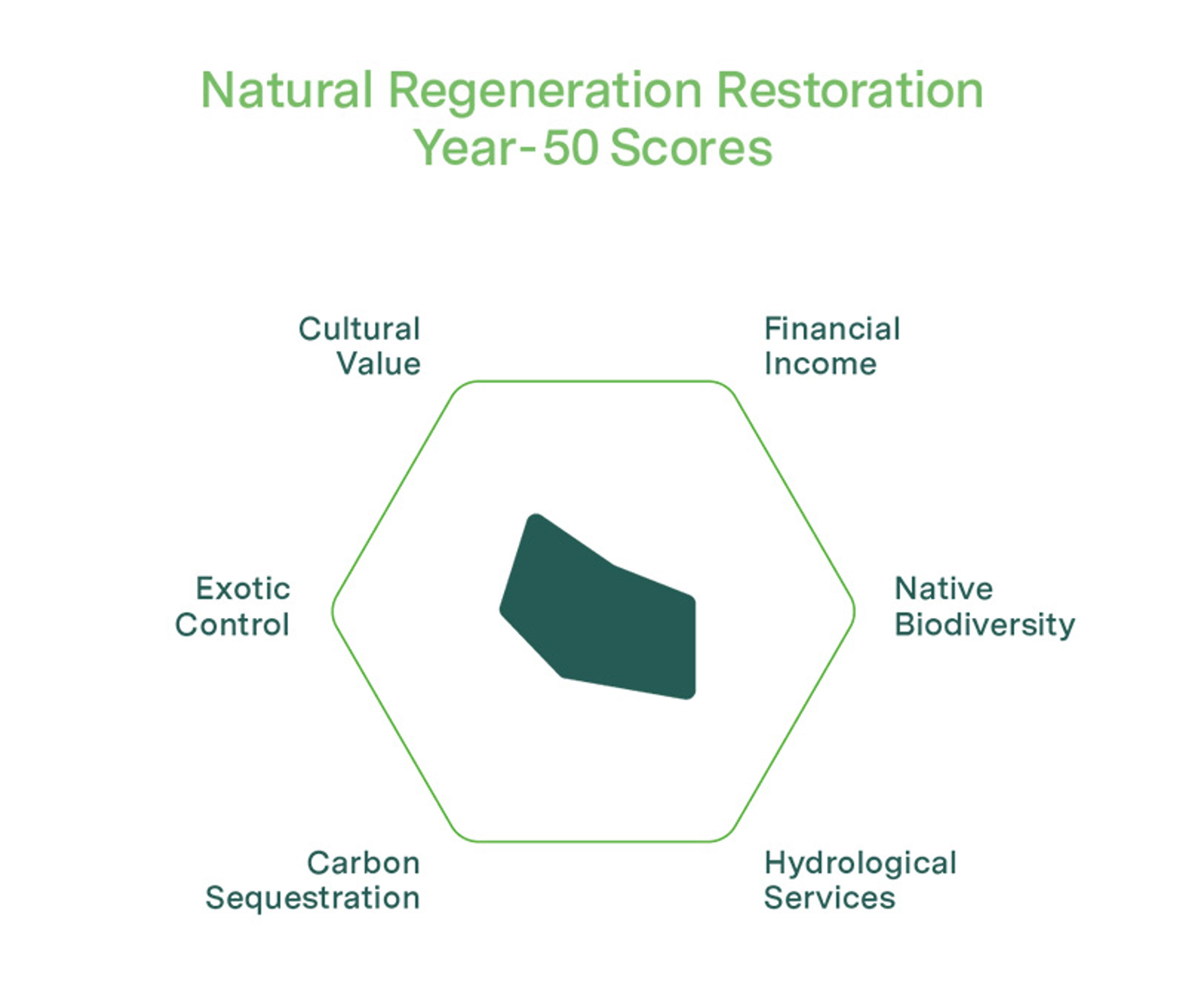
The embedded polygon approach provides a way to display the tradeoffs and synergies among hoped-for values derived from ecosystem restoration. Nevertheless, I’ve realised that cultural values vary so greatly among stakeholders that agreements about non-market value scores are unlikely. I also recognise that my loathing of exotic species makes little sense to the people who plant them. Similarly, as I prepare for an upcoming controlled burn, I’m reminded that fires essential to savannas are bad for pastures of ‘improved’ grasses and, if at all intense, bad for pine plantations too. Perhaps for proponents of the ‘let nature be’ approach to ecosystem restoration, fires started by lightning are OK but not those ignited with drip torches.

Pine savanna fire
My several acres might be small and my restoration successes modest, but the challenges I face exemplify a world of issues related to managing tradeoffs between trees, grass, people and other animals. Most fundamentally, few landowners in Florida, let alone in the tropics, can afford to forego profits from their land. Carbon payments might help encourage restoration rather than exploitation, but having jumped on that bandwagon back in the early 1990s, I have limited hopes for ‘sky money’ falling on ecosystem restorers. What’s more, if such money starts to fall in earnest, woe to the already beleaguered savannas and other naturally non-forested ecosystems of the world. Unless restoration interventions designed to mitigate climate change have effective provisos to protect non-forest biodiversity, that money will fund tree-planting tsunamis that will overwhelm savanna ecosystems. And if I were a cash-poor person in the tropics who owned degraded savanna land in an area where exotic eucalypts would grow, damn the bunchgrasses and let’s plant trees.
Given climate change, I won’t be able to bring back entirely what was lost
It’s clear that, for my tradeoff-envisioning system to be useful where landowners don’t have the luxury of managing for wildflowers, my polygons need axes representing values such as food, fuelwood, employment opportunities and land tenure security. And perhaps the polygons shouldn’t be equilateral and equiangular, with the irregularities representing stakeholder-determined value weightings. Even unequally armed stars could usefully portray a multitude of tradeoffs, and thereby inform discussions about land-use options.
Community-based ecosystem restoration is not much discussed in Florida; perhaps we already recognise the lack of shared values even within our ostensibly homogeneous communities. In the tropics, by contrast, international restoration policies and programmes assume it will be straightforward to get buy-ins from communities, whom they presume to be homogeneous in their land-use preferences. It’s not difficult to see that it would be foolhardy for me to try to convince many members of my Floridian community of the karmic benefits of savanna restoration, yet communities in the tropics are assumed to wholeheartedly endorse reforestation. Even when communities are basically on board, securing their continuing commitments to restoration entails extensive consultations that increase transaction costs as well as long-term investments in building the social capacity needed to run a restoration business. Whatever the costs and compromises associated with different restoration options, the tradeoff polygon approach presented here can help clarify what is at stake.
While I’m still mulling all this over, I admit to realising that, given climate change, I won’t be able to bring back entirely what was lost. Given that some plants in old-growth savanna can live to hundreds of years, I’ll also need patience. Be that as it may, after a pleasant hour or so of hand-tool work in my restoration area that satisfies my need for exercise and provides a spiritual uplift, I’ll get back to my paying job.






